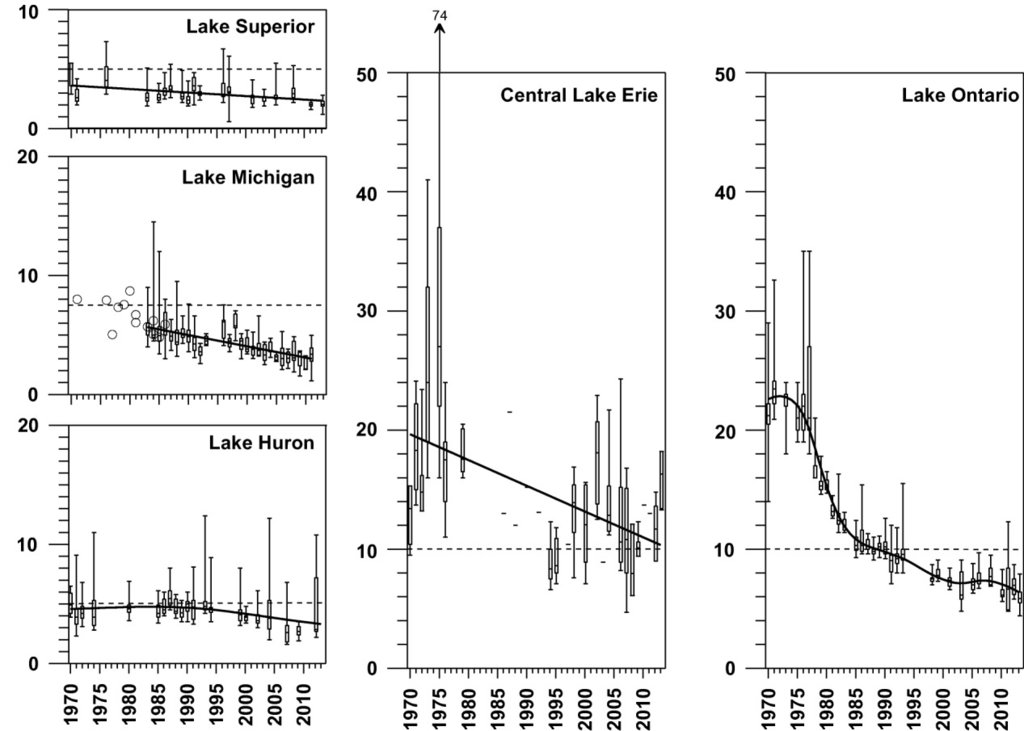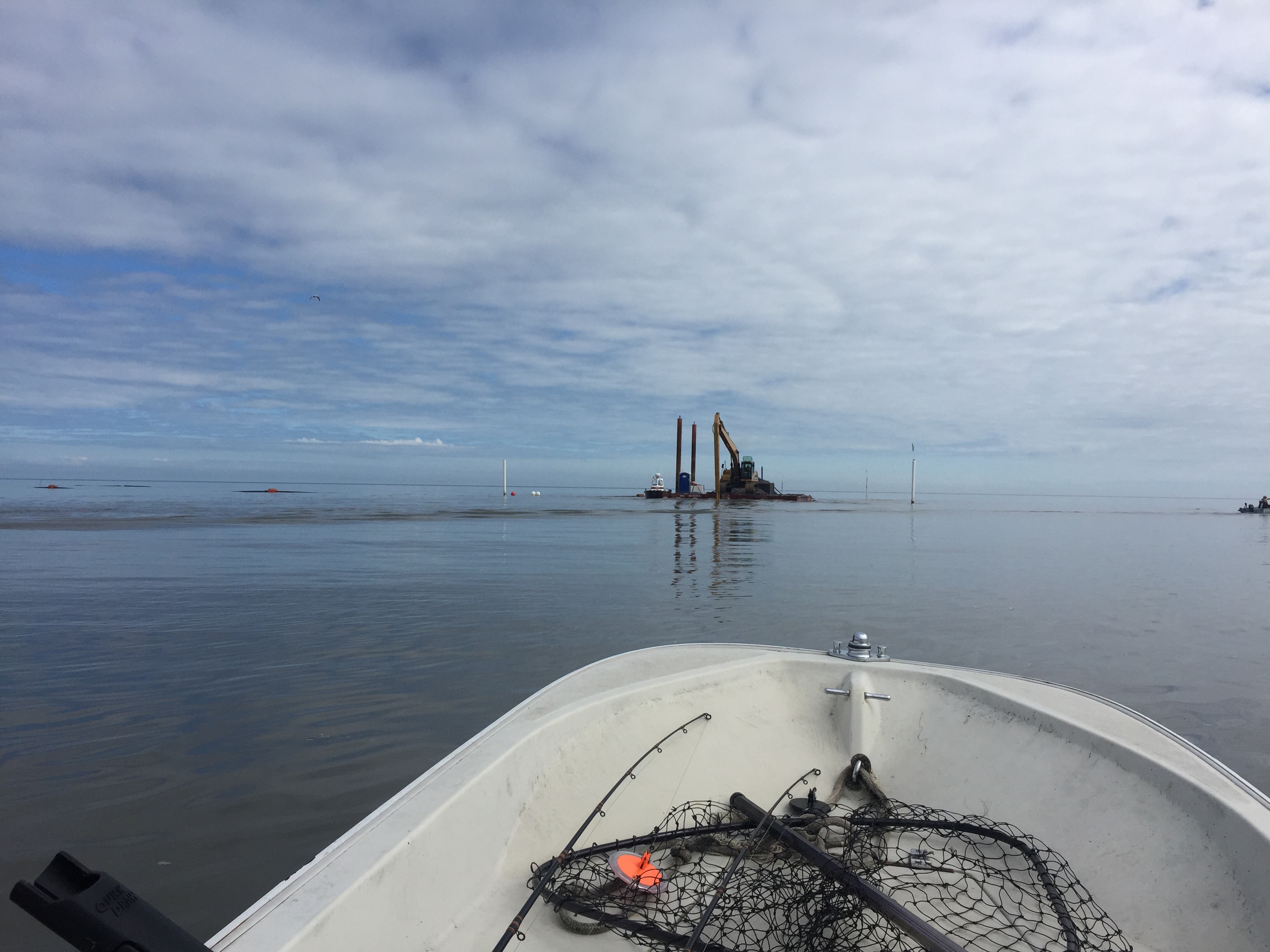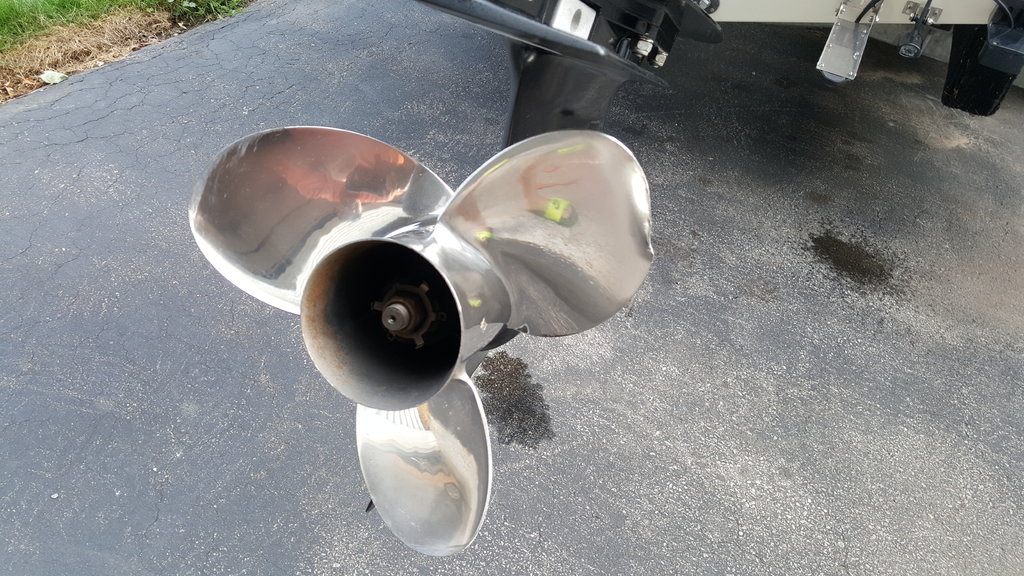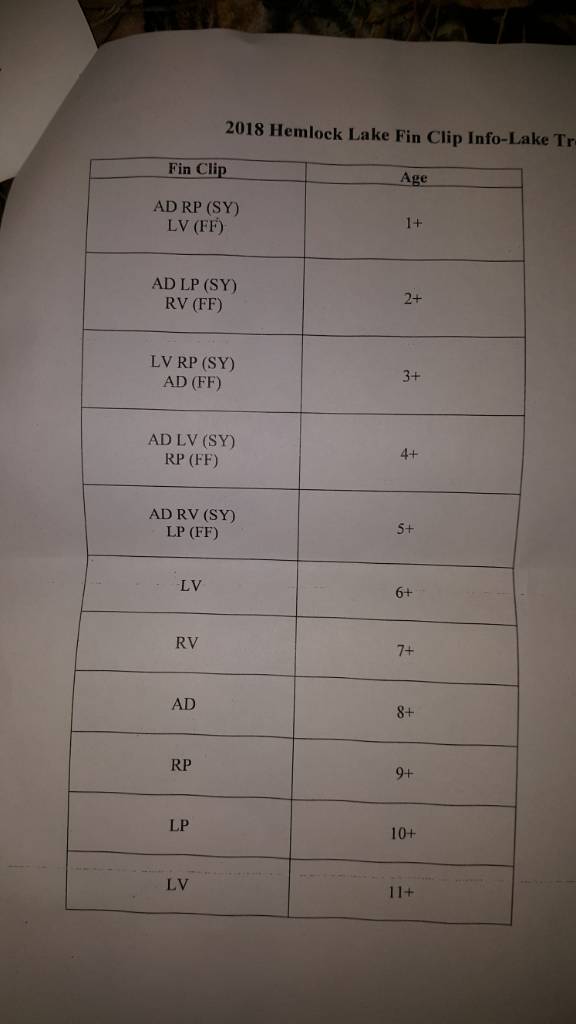

Lucky13
Members-
Posts
1,234 -
Joined
-
Last visited
Everything posted by Lucky13
-

Summer Internships For Environmental Science?
Lucky13 replied to Todd in NY's topic in Open Lake Discussion
https://cpb-us-w2.wpmucdn.com/www.paulsmiths.edu/dist/f/44/files/2017/12/2018-Job-Announcement-2agxtm8.pdf -
According to NYSDEC, "Fish Management Conesus Lake has traditionally been a productive fishery for warmwater sportfish and panfish. Northern pike, smallmouth bass, largemouth bass and walleye comprise the sportfishery; yellow perch, bluegills, pumpkinseed and brown bullhead are the principal panfish. Over the years the species balance has shifted. During the 1960's, Conesus produced an outstanding walleye fishery which diminished through the 1970's. During this same time, Conesus was locally famous for its remarkable yellow perch ice fishing. However, this fishery declined throughout the 1980's most likely due to a population explosion of newly arrived, unwanted alewives that directly competed with young perch for their preferred food - large zooplankton (microscopic animals). It is also likely that the abundant alewives consumed perch fry. Currently, Conesus produced excellent fishing for both bass species, northern pike, bluegills and sunfish. Based on on-going DEC studies, the walleye population is increasing in response to annual stocking of hatchery fingerlings. The yellow perch population also exhibits signs of improvement. Additionally, beginning in 1991, DEC began stocking Conesus with tiger muskies - a fast growing, sterile hybrid between northern pike and muskellunge. Early indications are that this striking fish will add an element of excitement to the fishery." They must feel that the spawners contribute, however, as they closed the Inlet to all fishing during the run.
-
Gator pretty well sums it up. Pressure on the bait from predator levels at the top and reduced nutrients at the bottom, lots of bait, but way less than before non native salmonids were introduced. Stocking numbers are way down from what was put in at the start, but there is significant natural reproduction of Kings, at least in the Salmon River. Some biologists say that the kings will adapt to food changes, others say they are primarily herring(alewife) feeders. Reports from Michigan indicate that they did not switch right over to bloater when the alewife population got smaller. Steve LaPan of NYSDEC will be the first to admit that they are managing for the bait now, and being conservative.
-

Genesee Charter Boat Association FREE Kid Derby
Lucky13 commented on henrybud's event in Community Calendar
-

Genesee Charter Boat Association FREE Kid Derby
Lucky13 commented on henrybud's event in Community Calendar
until
Cap'n Hammond, Is the derby being held on Club Terrace which appears to be the Yacht Club Driveway, or is it held at the Pubic Fishing Access site at the end of St Paul Blvd.? And what ages fall into the category of Kid?" Thanks -
We have not seen the results from last year yet. While there are 2015 fish around, they are not out there in great numbers The 2016 hatch,, which was reported on as one year olds in 2017, was very strong, but we are still waiting to see how last year's hatch made it through the winter. At the SOL meetings, Brian Weidel showed a graph that said it could go either way. No one who went out has said anything, or no one went out!
-
That was not an outlier, that is the long term trend, although it has risen , and been relatively static over about the last 20 years. Dr. Edward Mills coined the term "oligotrophication" to describe the cleaning up of Lake Ontario, basically the opposite of eutrophication. Read the section of the report I linked, it is all there, and the nutrient and chlorophyll trends are well graphed. To quote from the discussion,"Secchi depth, chl-a, and TP are indicators of lake trophic status (Carlson 1977). In 2016,average Apr-Oct values for all sites ranged from ... 5.2- 9.9 µg/L TP.... These values are within the range for oligotrophic (low productivity) systems (...1-10 µg/L TP; Wetzel, 2001)" I only included Total Phosphorus, but all are in range. Another graph from the Internet. 96-2001 are all in the oligotrophic region. .
-
"Whiting" is related to concentration of Calcium Carbonate. Deep water phosphorus concentrations have declined from the greater than 25 µg/l levels that produced the "pea soup" we saw in the late 60's to the ~7 µg/L concentration minimum of a few years ago. The nutrients controlling productivity in water bodies are the same as in fertilizer, N, P, and K, with P indicated as the limiting nutrient in Lake Ontario. Overall nutrient and phytoplankton levels in Lake Ontario are tracked as part of the trophic state monitoring conducted by Cornell Biological field station in conjunction with NYSDEC and others, and reported on in the State of the Lake reports (Last one was 2016, still waiting on 2017) I refer you to the discussion section of Section 16 of the report, 2016 Status of the Lake Ontario Lower Trophic Levels, which indicates that phosphorus levels remain at or below the 10 µg/L goal set for the Lake, and within the range associated with nutrient poor, oligotrophic lakes. https://www.michigan.gov/documents/deq/deq-oea-cau-whitings_415030_7.pdf http://www.dec.ny.gov/docs/fish_marine_pdf/lorpt16b.pdf
-
It is also a matter of what kind of algae. Blue greens, or cyanobacteria, are the big drinking water threat. According to Dr Greg Boyer of SUNY ESF, there are 6 factors that contribute to the blooms: Nutrient level, Light, Changing water temperatures, calm winds, seed populations, and grazers like the mussels. The only one readily susceptible to control is nutrient levels. Anglers should also be aware that ANY contact with blooms is now considered bad, so if you are trolling along and encounter a bloom, it is a good idea to glove up for the pickup, and then move. I have not heard of any open water blooms on Lake Ontario, but certainly some of the embayments like Sodus have experienced blooms. https://www.dec.ny.gov/chemical/77118.html https://www.dec.ny.gov/chemical/77145.html Other algae blooms, like the nearshore proliferation of grass greens like cladophora, are definitely a negative for lakeshore residents, and can lead to taste and or problems. Deepwater blooms on Lake Ontario are ubnlikely because the syatem as nutrient poor, despite the input from Lake Erie, which is manly impacted in the Western Basin due to the Maumee River. Of greater concern for the salmonid populations of Lake Ontario is status of the alewife population, which appears to be most impacted by predator demand and winter conditions, but is also limited by open water phytoplankton(algae) levels limited by nutrient levels . The quandary for managers is that they can only control predator demand by stocking reductions, and they have to make these decisions a few years before they will have an effect, so they have been forced to act conservatively, too much so for many of the anglers. But if the size of the Kings starts to drop off drastically, it is possible that they have underestimated demand So far, that is not happening, and a side benefit of too few predators would be at least some "monsters" showing up.
-
We may have a more proactive management group than the multiple states bordering Lake Michigan. Actions have been taken, despite their unpopularity, with an eye toward staving off such a collapse. There are certainly some variables that are not well defined, like diporea die off and its long term effects, but overall I think our scientists have a better handle on the Lake, and the appropriate predator-prey balance. http://www.dec.ny.gov/outdoor/107705.html http://www.dec.ny.gov/outdoor/111196.html http://www.dec.ny.gov/outdoor/27068.html
-

Mexico Point
Lucky13 replied to Kevin J Legg's topic in New York Fishing Reports - Lake Ontario (South Shore)
When we used to dip smelt at Russell Station, there were always a lot of emeralds with them early in the run. The alewife would show up right around when the smelt were getting few and far between. You could always tell the novice smelters because their buckets were half full of emeralds. -
Organisms exposed to Botulism toxin do not live very long. And for the botulism organism (Clostridium botulinum) to develop, the host must already be dead, as the organism is anaerobic, will only grow in an oxygen free environment. The hypothesis for Type E botulism, blamed for bird deaths (notably loons and mergansers) in Erie and Ontario, is that as Dreissenids (Zebra and Quagga mussels) colonize and grow, they build layers on older mussel shells. Eventually, the mussels at the bottom die, and decompose, using up oxygen in the surrounding water.The overlaying layers prevent movement of oxygenated water down to the base layers, and in that oxygen free environment, Type E develops. The toxins move to the surface of the mussel colony and affect those mussels, which are then ingested by gobies. These gobies become ill, and are then easier for the birds to catch, then the birds die. Drum, which also feed on the mussels and small fish in the vicinity, are most susceptible. If you catch a fish that is obviously sick, does not fight, etc, maybe it has botulism, DO NOT EAT IT, but healthy fish will not be a problem, at least for botulism. Other toxins move up through the food chain, starting with phytoplankton, so alewife eaters get just as much toxin as goby feeders. Lake trout have more toxins because generally at any given size, they are older, so have been accumulating materials for a longer time.
-

BRADDOCKS BAY WARNING UPDATE
Lucky13 replied to budweiser's topic in New York Fishing Reports - Lake Ontario (South Shore)
If you are envisioning a " jetty" in the conventional sense, like the piers at the mouth of the Genesee, you may be surprised. Any sand pulled from west of the barrier and then replaced should be part of the Headlands Barrier 5. How will this project affect the nearshore (littoral) movement of sand in Lake Ontario? In addition to protecting interior wetlands from erosion, the artificial headland beach is also expected to improve near-shore sand transport on Lake Ontario in the vicinity of Braddock Bay. Currently, near-shore sand, moving in an easterly direction down the shoreline, enters the bay and becomes trapped within. Similar to the historic land spits, the restored barrier beach will block some of this littoral sand from entering the bay, allowing it to remain in the near-shore system and provide sand to down drift beaches. 6. Have projects similar to this been built before, what do they look like, and were they successful? Similar headland breakwater structures have been successfully implemented at other sites on the Great Lakes to create beach shoreline. Since being constructed over twenty years ago, both Sims Beach in Euclid, Ohio and Maumee Bay State Park in Oregon, Ohio have retained their original shapes and not required any beach nourishment. Figure 7 Sims Beach, Euclid Ohio in 1992 Figure 8 Maumee Bay State Park, Oregon, OH, 1992 Similar channeling and potholing projects have been used at other sites on Lake Ontario to restore wetland diversity and habitat suitably. Excavation of channels and shallow open water areas are proposed as a method to diversify conditions in the emergent wetlands of Braddock Bay that are currently dominated by mono-typic cattail stands. This process, termed channeling and potholing, aims to increase the amount of open water areas interspersed within the wetland complex, allow a pathway for fish to enter the marsh interior and fringe sedge-grass meadows during flooded conditions, and ultimately increase the diversity of wetland habitats present. The variable topography and hydrology created through channeling and potholing will create a wider variety of conditions that can support a greater diversity of emergent, submergent, and sedge-grass meadow plant species within the interior of the marsh. -
USACE to host Great Lakes “Shallow Draft Recreational Harbor” meeting Email Print Posted 4/9/2018 Release no. 18-004 Contact Andrew Kornacki 716-879-4349 716-352-8669 (cell) andrew.a.kornacki@usace.army.mil The U.S. Army Corps of Engineers will hold a Great Lakes “Shallow Draft Recreational Harbor” meeting Tuesday from 1:30 pm to 3:00 p.m. (EDT) at multiple locations throughout the Great Lakes region, as well as via the web and teleconference. The focus of the meeting will be on the needs of shallow draft recreational harbors, highlighting funding issues and system requirements. While the Whitehouse released the FY19 President's Budget in Feb. 2018, USACE is still awaiting a final FY18 funding determination, expected later this spring. Details on the meeting locations, teleconference call-in number, and webinar are below. Please confirm your plans to attend the meeting with Karen Kelly at (313) 226-6389 or by email at Karen.A.Kelly@usace.army.mil. In your response, please indicate whether you will participate by phone or at which location if you plan to attend in person. Please direct specific questions to the appropriate office's point of contact. Meeting Locations: Corps of Engineers Detroit District Office 477 Michigan Ave 7th Floor, ETS Conference Room Detroit, Ml 48226 POC: Karen Kelly - (313) 226-6389 Corps of Engineers Duluth, MN Area Office 600 S. Lake Avenue Duluth, MN 55802 POC: Ed Parzych - (218) 720-5260 ext. 35262 Corps of Engineers Sault Ste Marie, Ml Area Office 312 W. Portage Sault Ste Marie, Ml 49783 POC: Jim Peach - (906) 635-3463 Corps of Engineers Grand Haven, Ml Area Office 307 S. Harbor Street Grand Haven, Ml 49417 POC: Dan Clark - (616) 842-5510 ext. 25517 Corps of Engineers Kewaunee, WI Area Office 124 N. Main Kewaunee, WI 54216 POC: Kim lhlenfeldt - (920) 388-3720 ext. 83710 Corps of Engineers Chicago, IL District Office 231 S. La Salle Street, #1500 Chicago, IL 60604 POC: Phil Horstman - (312) 846-5501 Corps of Engineers Buffalo District Office 1776 Niagara Street Second Floor, Conference Room A+B Buffalo, NY 14207 POC: Dave Swiatek - (716) 879-4371 Corps of Engineers Cleveland, OH Area Office 1035 E. 9th Street First Floor Conference Room Cleveland, OH 44114 POC: Bradley Faulkenberg - (937) 690-9548 If you are unable to travel to any of these locations, we also have a teleconference call-in number and webinar access: AUDIO CONFERENCE ACCESS: * USA Toll-Free: (888) 557-8511 PARTICIPANT CODE: 1976506 SECURITY CODE: 1234 WEB MEETING ACCESS: *Join WebEx meeting *MEETING NUMBER: 962 037 871 Note: The first time you use the WebEx Meeting Service, you will need to download the client software. Web Meeting HELP & Software Downloads can be found at: https://www.webmeeti ng.att.com If you experience any trouble during the conference call, please contact Karen Kelly at (313) 226-6389.
-
Pulaski is only about 30 minutes from Oswego, and there's lots of places around there. Look for something in Port Ontario or Pulasksi, I also think there is a motel in Mapleview, that is just the other side of Mexico.
-
http://w1.weather.gov/data/obhistory/KART.html High wind warning in effect until 5 PM. https://forecast.weather.gov/MapClick.php?lon=-75.91116175545794&lat=43.986010641055515#.WtTH6-SWweE
-

BRADDOCKS BAY WARNING
Lucky13 replied to budweiser's topic in New York Fishing Reports - Lake Ontario (South Shore)
I had a friend who kept his boat at Braddock in the early 80's, and the " channel" was squirrely then. There has never been a well established channel, at least since the trolley line went away. T my knowledge, Steve Gibbs was the last one to dredge out there, part of what put him out of business out there. Determining the responsible " who" for the alleged pipe could be a real challenge, too. I was understanding that the project was built around moving the new channel and clearing all the old garbage out of the bay. This is why they are paying for a new groin jetty and have budgeted for continued dredging. I don't know where you got your information, but that weblink to the USACE site will show you all the correct information , and it has been out there since the inception of the project. The project is being paid for out of the Great Lakes Restoration Initiative, a Federal funding stream that had money for habitat work in Areas of Concern. It did NOT contain funding for navigation projects. The only reason that any dredging was built in was to obtain native sand for building up the barrier structure. When you are talking to your legislative connection, maybe you can get them to find money for a navigation project out there, but for the last quite a few years there has not been any identified. Remember what it took to get the Genesee River, which is a Federal navigation project, or the Irondequoit Bay mouth, also a Federal project, dredged the last time. -

BRADDOCKS BAY WARNING
Lucky13 replied to budweiser's topic in New York Fishing Reports - Lake Ontario (South Shore)
Whaler is correct. As to the "dredging" it was postponed for 2017 due to the high water, I am sure you guys remember that. There was a 5 mph speed limit within 600 feet of shore, as well. Coming into Braddock on plane might be what the lawyers call reckless, what makes the damages incurred a "self inflicted hardship." There were only 3 well attended public meetings on the project http://www.lrb.usace.army.mil/Missions/Civil-Works/District-Projects/Braddock-Bay/ -
The latest issue of SalmonTroutSteelhead has an article about the new freshwater halibut program in California, all very scientific. I am also nursing a sore mouth.....;-)
-

Hemlock Canadice - Hemlock angler diary report
Lucky13 replied to JJBat150's topic in Finger Lakes Discussion
I think the major factor in Rainbow decline were the major manure spills and associated fish kills that occurred a few years back and the beaver dams that impeded ability of the few fish that remained after the spills to get upstream to repopulate. I do know a couple of guys who do quite well in the spring in the creek but they are tight lipped and they cover a LOT of ground. I liked the Landlocked salmon, too, but I didn't get interviewed. But lots of people did, and they preferred trout and bass. They stock well over one quarter million walleye in Conesus, ought to be lots of opportunity there! -

Hemlock Canadice - Hemlock angler diary report
Lucky13 replied to JJBat150's topic in Finger Lakes Discussion
Hemlock and Canadice Lake Angler Opinions Abstract During creel censuses to determine catch and harvest statistics (reported separately), anglers were asked for their opinions concerning fishing satisfaction, current fishing regulations, potential management actions, stocking, and general management of Hemlock and Canadice Lakes (April 2005 - March 2006) and Springwater Creek (April - May 2005). Census agents interviewed 1,286 people at Hemlock Lake, 804 people at Canadice Lake, and 131 people at Springwater Creek. Most anglers preferred to fish Hemlock and Canadice Lakes for rainbow and brown trout and largemouth and smallmouth bass; there was no interest in landlocked salmon. Members of local fishing clubs expressed a preference for the development of a walleye fishery in Hemlock Lake; however, most anglers preferred that the current trout management strategy be continued. The majority of Springwater Creek anglers were not members of fishing clubs and most rated their fishing trips excellent or good; however, those that were members of clubs generally rated their trips fair. Rainbow trout was the most preferred species, but there wasn't consensus among anglers about the status of the fishery. Opinions were evenly divided among those that thought it had increased, decreased, remained the same over the last ten years, or had no opinion. Most anglers interviewed on Springwater Creek preferred that the current Hemlock Lake coldwater management strategy be continued, rather than allowing the development of a walleye fishery. Slightly more than half of the national or state fishing club members support developing a brown trout fishery in Springwater Creek, but there was little support from non-club and local club members. The results of the survey were used to develop fisheries management recommendations for these waters. Recommendations included discontinuing Atlantic salmon and walleye stocking, developing brown trout management objectives, re-evaluating salmonid stocking rates and proportions, and further examining fish community interactions. Current fishing regulations should remain in effect and periodic stock assessments should be conducted. http://www.dec.ny.gov/docs/fish_marine_pdf/hemcanangsuv.pdf -

Hemlock Canadice - Hemlock angler diary report
Lucky13 replied to JJBat150's topic in Finger Lakes Discussion
Irondequoit Bay gets 36000. The Genesee River has natural populations below the lower falls, and has excellent fishing in the Mt Morris to Geneseo stretch. And I think Hemlock and Canadice are the only two small boat trout lakes within 2 hours of Rochester, so we trout fishers who use canoes and kayaks have even less spots than you. Your motto is have trailer will travel! I want DEC to build me a trout stream in my backyard, too. I'm not holding my breath, though.






until